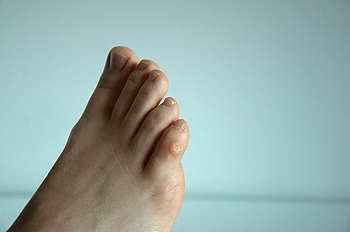
There are many people throughout the world that stand for the majority of the day. Frequently moving about can help to promote blood circulation to the feet, and performing simple foot stretches can help the feet to feel better. It is important to wear shoes that fit properly and to also stand on a stress mat, which can both help make standing all day more manageable and healthy for the feet and overall body. An effective stretch to strengthen the feet is done by using a foot roller. This can help to increase the strength in the arches, and may help to reduce the risk of developing plantar fasciitis and Achilles tendonitis. Many people who stand while working find it helpful to perform ankle rotations several times per day, in addition to wearing compression socks which can help to support the legs. If you would like more information about the benefits of stretching while standing all day, please speak with a chiropodist.
If you stand all day, you may be at an increased risk of developing various foot conditions. If you are experiencing foot pain of any kind, please consult with one of the specialists from Thornhill Foot Clinic. Our chiropodists will assess your condition and provide you with quality foot and ankle treatment.
What Foot Problems Are Caused by Standing?
Standing all day at work may increase your risk of developing foot or ankle problems.
Some common foot conditions that may arise from spending all day on your feet include:
Foot pain
Blisters
Corns and calluses
Arthritis
Flat feet
Bunions
Sprains
Athlete’s foot
Prevention
If you stand for prolonged periods of time for work, taking preventative measures to preserve the health of your feet is strongly recommended.
Measures you can implement to help prevent foot problems include:
Wearing shoes that are comfortable and fit well - these shoes should be made of breathable materials and provide you with arch support and cushioning. It is best to avoid shoes that have heels or narrow toe boxes.
Taking breaks to rest, walk, and stretch your feet throughout the day
Maintaining good foot hygiene - wash and dry your feet thoroughly every day
If you have any questions, please feel free to contact our office located in . We offer the newest diagnostic and treatment technologies for all your foot care needs.





